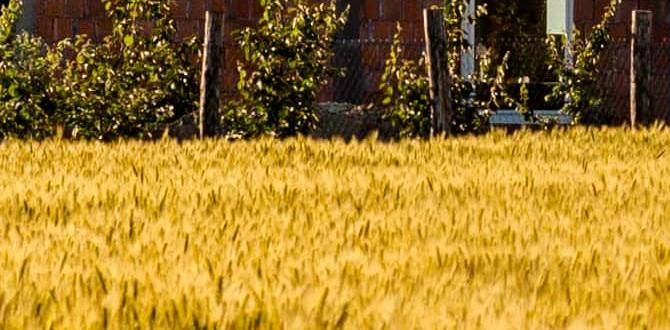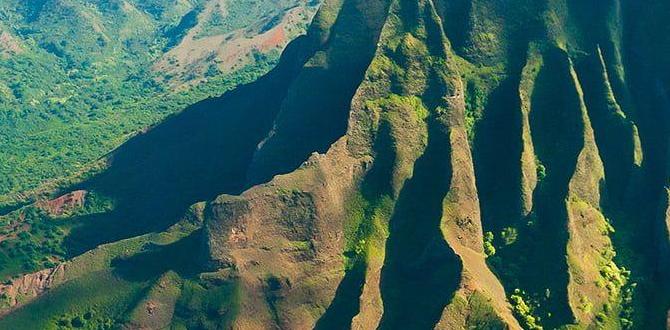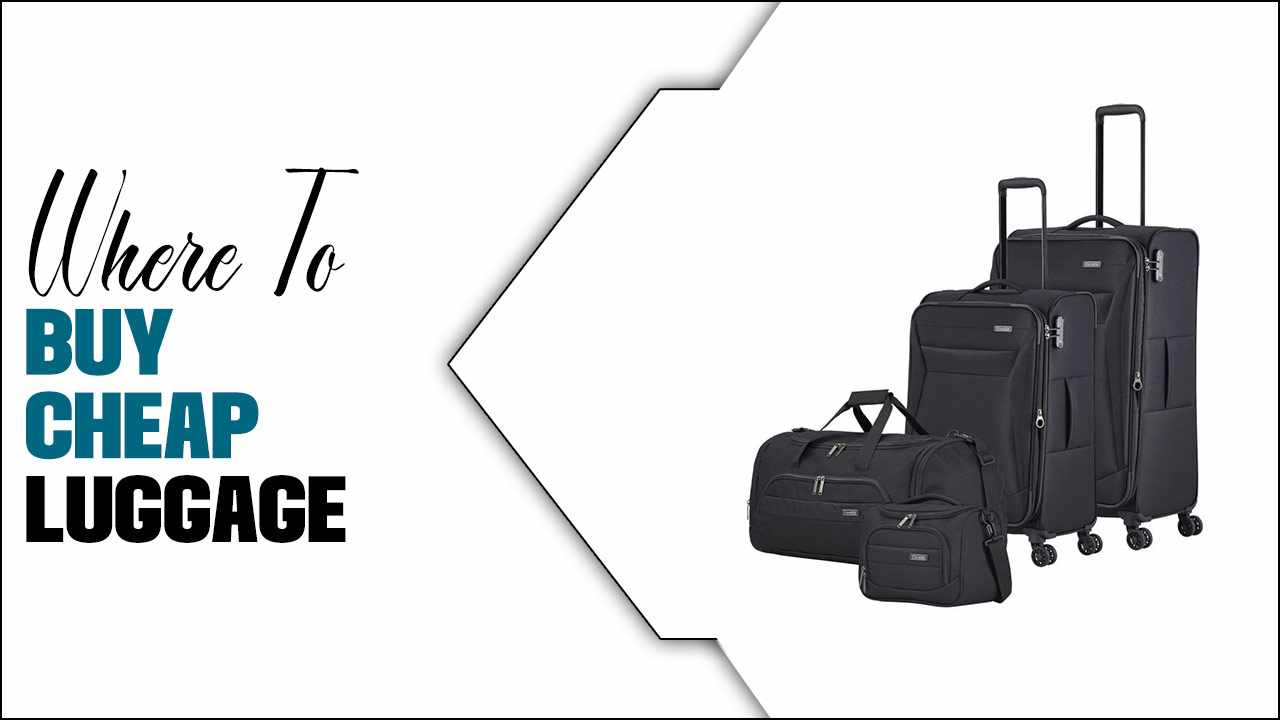Planning a trip to the Atacama Desert on a mid-range budget is achievable! This guide offers practical tips for comfortable, affordable travel, covering accommodation, transport, tours, and essential packing, ensuring a stress-free adventure without breaking the bank.
The Atacama Desert, a place of stark beauty and otherworldly landscapes, can feel a bit daunting to plan for, especially if you’re watching your travel expenses. You might be wondering how to experience its wonders – the salt flats, geysers, and starry nights – without spending a fortune.
It’s totally possible! This guide is designed to simplify your planning, offering clear, actionable advice so you can focus on the magic of the desert. We’ll walk through everything you need to know for a comfortable and memorable mid-range Atacama adventure.
Your Mid-Range Atacama Desert Adventure: An Overview
Welcome to one of the driest places on Earth! The Atacama Desert in northern Chile offers a truly unique travel experience, from its vast, arid plains and steaming geysers to its unparalleled stargazing opportunities. While it can cater to luxury travelers, it’s also a fantastic destination for those seeking a more budget-conscious, yet still comfortable, journey.
This guide focuses on providing you with the essential knowledge to plan a mid-range trip, balancing cost with comfort and memorable experiences. We’ll cover how to navigate your way, where to stay, what to see, and what to pack, all with a focus on making smart choices that enhance your trip rather than detract from it.
Getting Around the Atacama: Smart Transportation Choices
Navigating the Atacama Desert requires some thought, as distances are vast and public transport options are limited outside of the main town. For mid-range travelers, a combination of wise choices will get you to all the must-see spots comfortably.
Flights to the Region
The closest major airport serving the Atacama Desert is El Loa Airport (CJC) in Calama. From there, you’ll need to arrange transport to San Pedro de Atacama, the main tourist hub.
Booking Flights: Use flight comparison websites like Skyscanner or Google Flights to find the best deals. Be flexible with your travel dates if possible, as flying mid-week or during the shoulder seasons (April-May and September-October) can significantly reduce airfare costs.
Airlines: Major airlines operating routes to Calama include LATAM and Sky Airline. Look out for promotions and book in advance for the best prices.
Transfer from Calama to San Pedro de Atacama
Once you land in Calama, you have a few options to get to San Pedro de Atacama, about a 1.5-hour drive away.
Shared Shuttles: This is often the most cost-effective and convenient mid-range option. Companies like Transvip and Licancabur offer shared van services that meet flights and can be booked in advance online or upon arrival at the airport. They are comfortable and efficient.
Private Transfers: While more expensive, a private transfer offers more flexibility and comfort, especially if you are traveling with a group or have a lot of luggage. This might be a consideration if you find a good deal or are willing to splurge a little more.
Rental Cars: Renting a car in Calama provides the most freedom to explore at your own pace. For mid-range travelers, consider a smaller, fuel-efficient SUV if you plan on tackling some of the slightly more rugged routes. However, be aware of insurance costs and the potential need for a 4×4 for certain areas. Parking in San Pedro can also be challenging.
Getting Around San Pedro and Beyond
Walking: San Pedro de Atacama itself is a small, charming town that’s easily walkable. Most hotels, restaurants, and tour agencies are located within easy reach.
Bicycle Rental: For shorter excursions around San Pedro, such as visiting the Valle de la Luna or Pukará de Quitor (which are still a few kilometers away), renting a bicycle is a popular and budget-friendly option. Remember to wear sunscreen and carry plenty of water!
Tours: For most major attractions and sites further afield, joining organized tours is the most practical and often most economical choice for mid-range travelers. Agencies in town offer a wide range of tours, often bundling transport, guiding, and sometimes even entry fees.
Mid-Range Accommodation in San Pedro de Atacama
Finding a comfortable and well-located place to stay in San Pedro is key to enjoying your Atacama experience without overspending. Mid-range options offer a good balance of comfort, amenities, and affordability.
Types of Mid-Range Stays
Hostals and Boutique Hotels: Many charming ‘hostals’ (which often function more like budget hotels) and smaller boutique hotels offer private rooms with en-suite bathrooms, comfortable beds, and sometimes even breakfast included. These places are typically family-run and provide a more personal touch.
Guesthouses (Pensiones): Similar to hostals, these offer simple, clean rooms and are a great way to engage with local hospitality. Amenities might be more basic, but they are clean and safe.
Budget Hotels with Extra Comfort: Some establishments that might be classified as ‘budget’ offer slightly more amenities like Wi-Fi, heating/cooling, and inclusion of breakfast, making them ideal mid-range choices.
What to Look For
Location: Staying close to the main street (Caracoles) is convenient for accessing tours, restaurants, and shops. However, a few blocks away can offer more tranquility and potentially better prices.
Amenities: Check for what’s included. Wi-Fi is essential for many, and breakfast can save you money. Air conditioning or heating might be important depending on the season.
Reviews: Always read recent reviews on platforms like Booking.com or TripAdvisor. They provide honest insights into cleanliness, service, and the overall experience.
Examples of Well-Regarded Mid-Range Options (Always check current reviews and prices):
Hostal Takha Takha: Often praised for its friendly staff and good location.
Hotel Poblado Kimal: A bit of a step up, offering more comfort and amenities while still being accessible for mid-range budgets.
Terrantai Lodge: Known for its atmospheric setting and comfortable rooms.
Essential Atacama Desert Tours for Mid-Range Travelers
The Atacama Desert is best explored through organized tours, especially as many attractions are quite far apart and require specific transport. For mid-range travelers, choosing wisely will ensure you see the highlights without overpaying. Consider packages or booking multiple tours with one agency for potential discounts.
Must-Do Tours and What to Expect
Here’s a breakdown of popular tours that offer incredible value for mid-range travelers:
1. Valle de la Luna & Valle de la Muerte (Moon & Death Valley) Tour
Experience: Witness surreal landscapes resembling the moon’s surface with dramatic rock formations, salt caves, and stunning sunset views over the Andes. Often includes a walk through Valle de la Muerte for its impressive dunes.
Duration: Typically a half-day tour in the afternoon.
Mid-Range Value: This is usually one of the more affordable tours and is an absolute must-do for first-time visitors. The scenery is unforgettable.
2. El Tatio Geysers Tour
Experience: Visit one of the highest geyser fields in the world at sunrise. Witnessing the steam erupt against the cold morning air is spectacular. The tour usually includes a stop at Machuca village and sometimes a hot spring dip.
Duration: Full day, departing very early morning (around 4-5 AM).
Mid-Range Value: This tour involves an early start and a significant drive, making it slightly more expensive but well worth it for the natural spectacle. Tours typically include transport and guides.
3. Altiplanic Lagoons & Salar de Atacama Tour (Lagunas Altiplanicas)
Experience: Explore the high-altitude Miscanti and Miñiques lagoons, featuring vibrant blue waters set against volcanic backdrops, often populated by flamingos. The tour usually includes a stop at Salar de Atacama to see flamingos in their natural habitat at Laguna Chaxa.
Duration: Typically a half-day tour, often in the morning.
Mid-Range Value: Offers stunning natural beauty and wildlife viewing. Price is generally moderate.
4. Stargazing Tour
Experience: The Atacama is world-renowned for its clear skies and low light pollution, making it one of the best places for stargazing. Tours involve going to a dark site, using telescopes, and learning about the constellations from expert guides.
Duration: Evening tour.
Mid-Range Value: While prices can vary, this is a truly unique experience that is generally very well-priced for what you get. Some tours offer an astronomical talk and photos.
5. Piedras Rojas & Salar de Talar Tour
Experience: A longer day trip that takes you to the striking Ophthalmological Andes, Piedras Rojas (Red Rocks), and Salar de Talar, a vast salt flat with turquoise lagoons. The scenery is dramatic and less visited than some other spots.
Duration: Full day.
Mid-Range Value: This is usually one of the more expensive tours due to the longer distance, but the unique and awe-inspiring vistas make it a worthy splurge for mid-range budgets.
Table: Example Tour Costs (Estimates for Mid-Range)
The prices below are approximate and can vary based on the agency, season, and inclusions. Always confirm pricing when booking.
| Tour Name | Estimated Price (USD) | Duration | Key Highlights |
| Valle de la Luna & Muerte | $20 – $35 | Half-Day (PM) | Moon-like landscapes, salt caves, sunset |
| El Tatio Geysers | $35 – $55 | Full-Day (AM) | Sunrise geyser activity, hot springs, Machuca |
| Altiplanic Lagoons & Salar | $30 – $45 | Half-Day (AM) | High-altitude lagoons, flamingos, salt flats |
| Stargazing Tour | $30 – $50 | Evening | Telescope viewing, astronomy talk, night sky photos |
| Piedras Rojas & Salar de Talar | $50 – $75 | Full-Day | Red rocks, turquoise lagoons, vast salt flats |
Note: Entrance fees to some national parks (e.g., Los Flamencos) are often not included in tour prices and must be paid separately, typically in cash.
Essential Packing List for the Atacama Desert
Packing for the Atacama requires a focus on sun protection, layering for temperature fluctuations, and comfort. Even on a mid-range budget, having the right gear can make a huge difference in your enjoyment.
Clothing Essentials
Sun Protection:
Wide-brimmed hat or cap: Essential for protecting your face and neck.
Sunglasses: High UV protection is crucial.
High SPF sunscreen: Reapply frequently, even under cloudy skies. Lip balm with SPF is also recommended.
Lightweight, long-sleeved shirts and pants: For sun protection. Quick-drying fabrics are ideal.
Layering is Key: The desert experiences significant temperature swings, from hot sunny days to chilly nights.
Base Layers: Moisture-wicking t-shirts and thermal underwear (especially for early morning tours).
Mid Layers: Fleece jacket or a warm sweater.
Outer Layer: A windproof and water-resistant jacket is highly recommended, even if rain is unlikely, as it can get quite windy.
Bottoms: Comfortable hiking pants or durable travel pants. Shorts can be worn during the hottest parts of the day but protect legs from sun.
Footwear:
Comfortable, closed-toe walking shoes or hiking boots are a must. Ensure they are broken in.
Sandals or flip-flops for relaxing at your accommodation.
Other Clothing:
Scarf or bandana: Useful for protecting your face from dust or the sun.
Swimsuit: If your accommodation has a pool or if you opt for tours that include hot springs.
Health and Personal Care
Basic First-Aid Kit: Band-aids, antiseptic wipes, pain relievers, any personal medications.
Hand Sanitizer: Essential for hygiene when facilities might be limited.
Insect Repellent: While the Atacama is dry, some biting insects can be present, especially near oasis areas.
Moisturizer: The dry air can be hard on your skin.
Adult Diapers / Incontinence Supplies: For travelers who may need them for comfort, long journeys, or managing health conditions, packing discreet and reliable adult diapers is a smart move. Opt for highly absorbent, breathable options designed for extended wear. Brands offering good coverage and leak protection can ensure peace of mind. Similarly, parents traveling with younger children might consider packing child diapers or pull-ups for added security during bus rides or excursions. Having these essentials readily available reduces travel stress.
Electronics and Accessories
Power Bank: Essential for keeping your phone and camera charged, especially on long tour days.
Camera & Extra Batteries/Memory Card: You’ll want to capture the incredible scenery.
Reusable Water Bottle: Staying hydrated is critical. You can refill it at your accommodation.
Headlamp or Small Flashlight: Useful for navigating in the dark, especially for early morning or evening tours, and for your accommodation if power goes out.
Adaptor and Converter: Chile uses Type L plugs (similar to Type F) and 110-220V.
Small Backpack or Daypack: For carrying water, snacks, sunscreen, a jacket, and your camera during day trips.
Documents and Money
Passport and Visa (if required): Keep copies separate from the originals.
Travel Insurance Details: Absolutely essential.
Cash (Chilean Pesos): While cards are accepted in San Pedro, many smaller businesses, tour operators, and park entrance fees require cash. ATMs are available but can sometimes be unreliable.
Eating Well on a Mid-Range Budget in San Pedro
San Pedro de Atacama offers a surprising range of dining options. You can eat well and affordably by making smart choices.
Local Flavors and Budget Bites
Menu del Día (Set Menu): Many restaurants, especially smaller ones off the main tourist drag, offer a ‘menu del día’ at lunchtime. This usually includes a starter, main course, and sometimes a drink or dessert at a fixed, reasonable price. It’s a great way to try local dishes like pastel de choclo, cazuela, or different stews.
Empanadas: A classic Chilean snack, empanadas filled with cheese, meat, or seafood are widely available and make for a quick, cheap, and satisfying meal or snack.
Choripán: Grilled chorizo sausage in a bread roll, often served with pebre (a spicy salsa). A popular and filling street food.
Local Markets: While San Pedro doesn’t have a large central market for prepared food, smaller stalls may offer fresh fruit or simple snacks.
Cook Your Own Meals: If your accommodation has kitchen facilities (even basic ones), buying supplies from a local supermarket and preparing some of your own meals can significantly cut down on costs. Fresh produce, bread, cheese, and pre-cooked meats are good options.
Mid-Range Restaurants to Consider
Look for restaurants that balance atmosphere with reasonable prices. Many places on or just off Caracoles offer a good mid-range experience. Don’t shy away from places that look a bit more local or less polished; they often offer better value and more authentic cuisine.
Pueblo Rústico: Often offers a good mix of Chilean and international dishes in a pleasant setting.
Blanco: A popular spot known for its good atmosphere and varied menu.
La Casona: A well-regarded option for traditional Chilean food.
Tip: Look for happy hour deals for drinks, and consider having your main meal at lunchtime when set menus are most common and often cheaper.
Staying Safe and Healthy in the Atacama
The Atacama is generally a safe destination, but its unique environment requires some consideration for health and safety.
Altitude Sickness (Soroche)
San Pedro de Atacama is at an elevation of about 2,400 meters (7,900 feet). Many tours go much higher, up to 4,000-5,000 meters (13,000-16,000 feet).
Acclimatize: Spend your first day taking it easy. Avoid strenuous activity and alcohol.
Hydrate, Hydrate, Hydrate: Drink plenty of water and electrolyte drinks.
Eat Lightly: Avoid heavy meals.
Recognize Symptoms: Headache, nausea, dizziness, fatigue. If symptoms are severe, descend to a lower altitude.
Medication: Consult your doctor about prescription medications like Diamox, though many travelers manage with simple precautions.
Coca Leaves: In many South American high-altitude regions, chewing coca leaves or drinking coca tea is a traditional remedy. You can often find coca tea in local shops in San Pedro.
Sun Protection is Paramount
The sun intensity in the Atacama is extreme due to the high altitude, dry air, and clear skies.
Constant Application: Always wear sunscreen (SPF 30 or higher, ideally 50+), a hat, and sunglasses. Reapply



